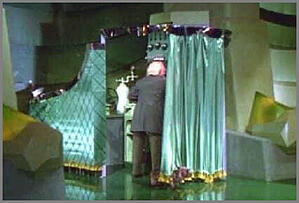There is a lot of talk about Kronos Workforce Timekeeper and the Totalizer. Whereas the IT types and system administrators know this stuff, what about the rest of us? Well, here is a quick introduction and explanation of the Totalizer.
The Totalizer is the brains behind the curtain of Workforce Timekeeper. It figures out how to pay employees for their time, from punch in (Let's say 8:06am) to their punch out (let's say 5:13pm). It compares the punches to the schedule and creates exceptions; it calculates the hours and puts them in pay codes; it reviews the amounts in specific pay codes and sends a manager an overtime alert (if configured). Most importantly, the Totalizer does all of this in the background so that you do not have to see it, much less think about it.

In previous versions for Workforce Timekeeper, the Totalizer lived on a separate server called the Background Processor. It stayed on that server all by itself and would wake up every couple of seconds to see if anything had changed.
If not, it would go back to snoozing. If something had changed in the system, for example; a punch was recorded, or a manager edited a punch, it would sit up in bed, stretch, put its feet on the floor, and get to work computing or recomputing totals, then storing them in the database.
This is known as totalizing the data, or bringing the data up to date. Generally, the Totalizer would go to work whenever anything changed for the employee after last totalization, or if a certain amount of time went by without activity on the employee's time data.
Nowadays the Totalizer is a Java process and it doesn't live by itself anymore. The Totalizer is really comprised of two parts, the Totalizer, and the second “Totalizer” we refer to as the Callable Totalizer.
The Callable Totalizer is responsible for the timecard totals seen when viewing the timecard. If you are using a feature in Workforce Timekeeper called auto-totalization then every time an edit is made within a timecard, the totals update; almost instantly and automatically. That is the work of the Callable Totalizer. Although those totals appear in the timecard, they are not written to the database, they are temporary until the timecard edits are saved.
Both the Totalizer and the Callable Totalizer run in the background without you really having to worry about them. You can check on them if you want. Go to: Setup> system configuration> system information> Background Processor to see if all of the employees are up to date; if their timecard data has been totalized.
If any are stuck, you can even nudge the Totalizer try to run through the data again. You can also peek at them under the Threads tab if you are feeling technical, but we won't delve into that here. There are queries that can be run on the database to see if the Totalizers are working and keeping up with the load, but again, we won't dive that deep.
The easiest way is to verify that the Totalizer is working its magic is to look at your Genies. Many Genies have a column called Totals Up To Date. If a check appears in this column then the Totalizer has totalized that employee's time data, and what you see in their timecard is real time.
My Totalizer Is Falling Behind!
Sometimes the Totalizer gets really busy and has a lot to do. Shift changes (all those punches coming in) are one of the busiest times for the Totalizer. Another taxing period is during sign off.
During sign off, the Totalizer has to throw out all of the totals that were not already signed off and recalculate them before signing the new totals off. System configuration changes also affect the Totalizer.
If a pay rule is changed, then all of those employees who may have their totals affected have to be re-totalized, sometimes a change may affect the whole entire employee population (this is one of many reasons why pay rule changes on Payroll Mondays are frowned upon).
When the Totalizer is not performing well, you will know about it. Employee time data will not be up to date, the totals up to date column in your genie will not be checked.
Reporting is also affected; a list of employees may be tacked on to the end of a report with a message indicating that they were not totalized. In fact, if too many employees would be on this list, the report will error out and not return any employees; just an error message about totalization. The system information screen will indicate that people are untotalized.
When these symptoms occur, you have to wait until the Totalizer catches up with the current totals. There are queries that can be run against the database (outside of the application) that show what remains on the Totalizer’s to do list, but that is just information for your review. It doesn't speed the totalization process.
Generally, when the Totalizer is falling behind, you just need to give it a little more time. If you are already giving the Totalizer as much time as you can, or totalization is taking an exorbitant amount of time, then it's time to call for help.
The Kronos Totalizer can be tweaked for improved efficiency or additional Totalizer threads can be added, however it is strongly suggested that this is left to professionals. They can look at the Totalizer in its current configuration, determine appropriate tweaks and provide improved performance.
That's Us! We are the Pros!
Don't go at this alone, we are here to help. Contact our team today for help navigating Totalizer and other Workforce Timekeeper features.




Comments